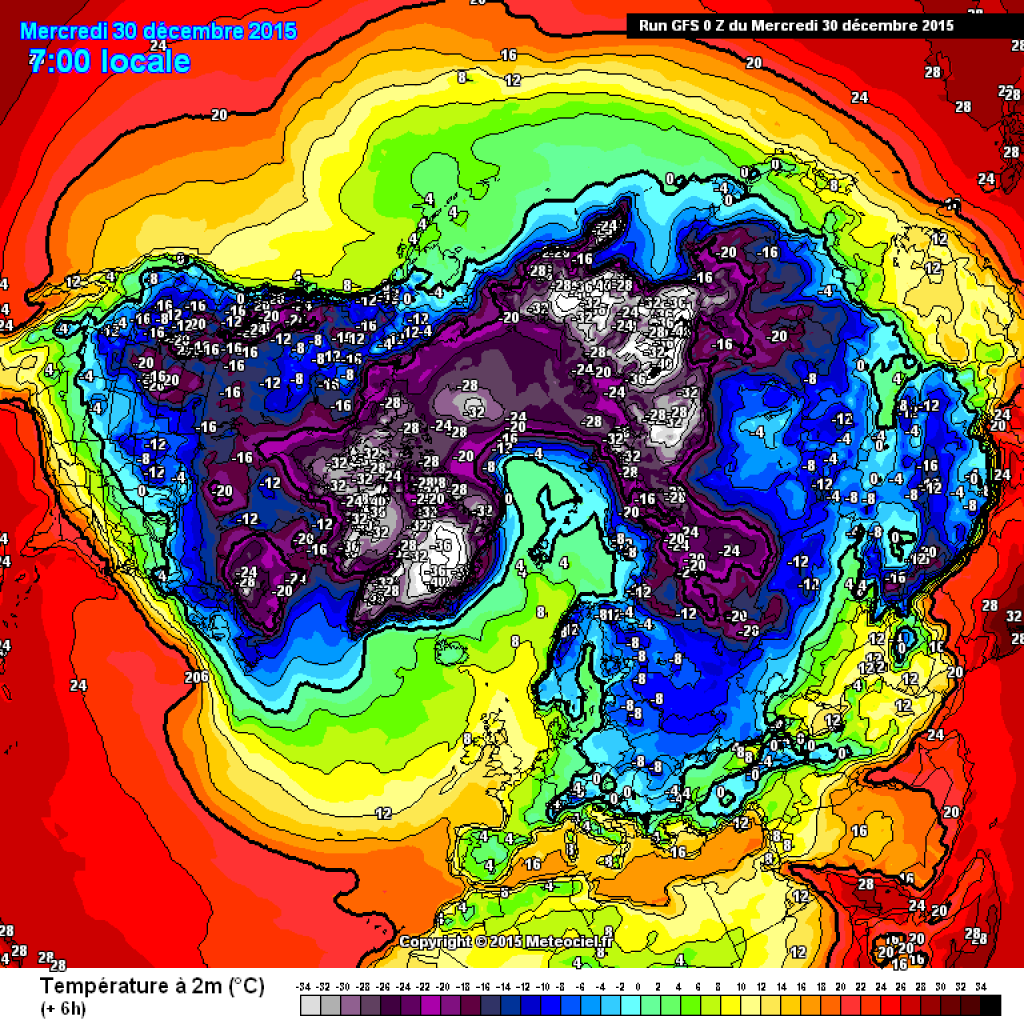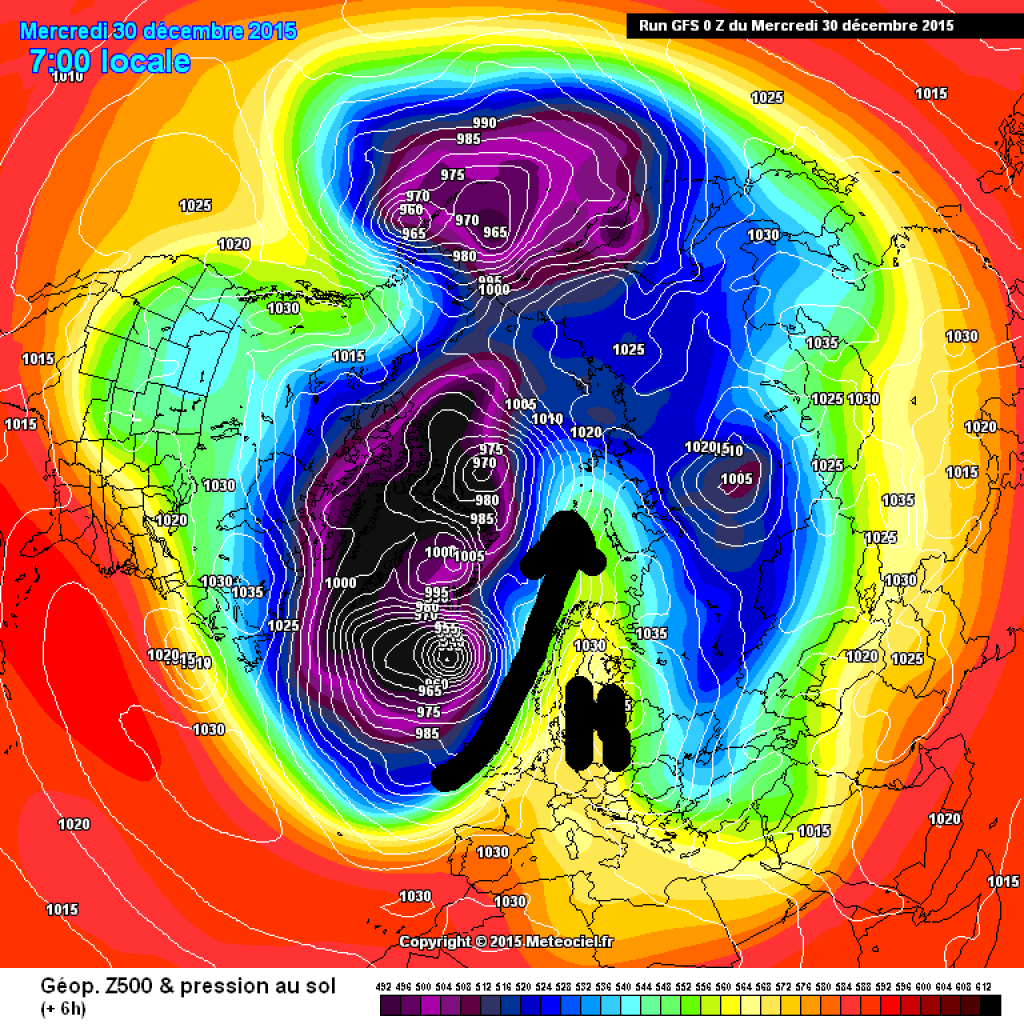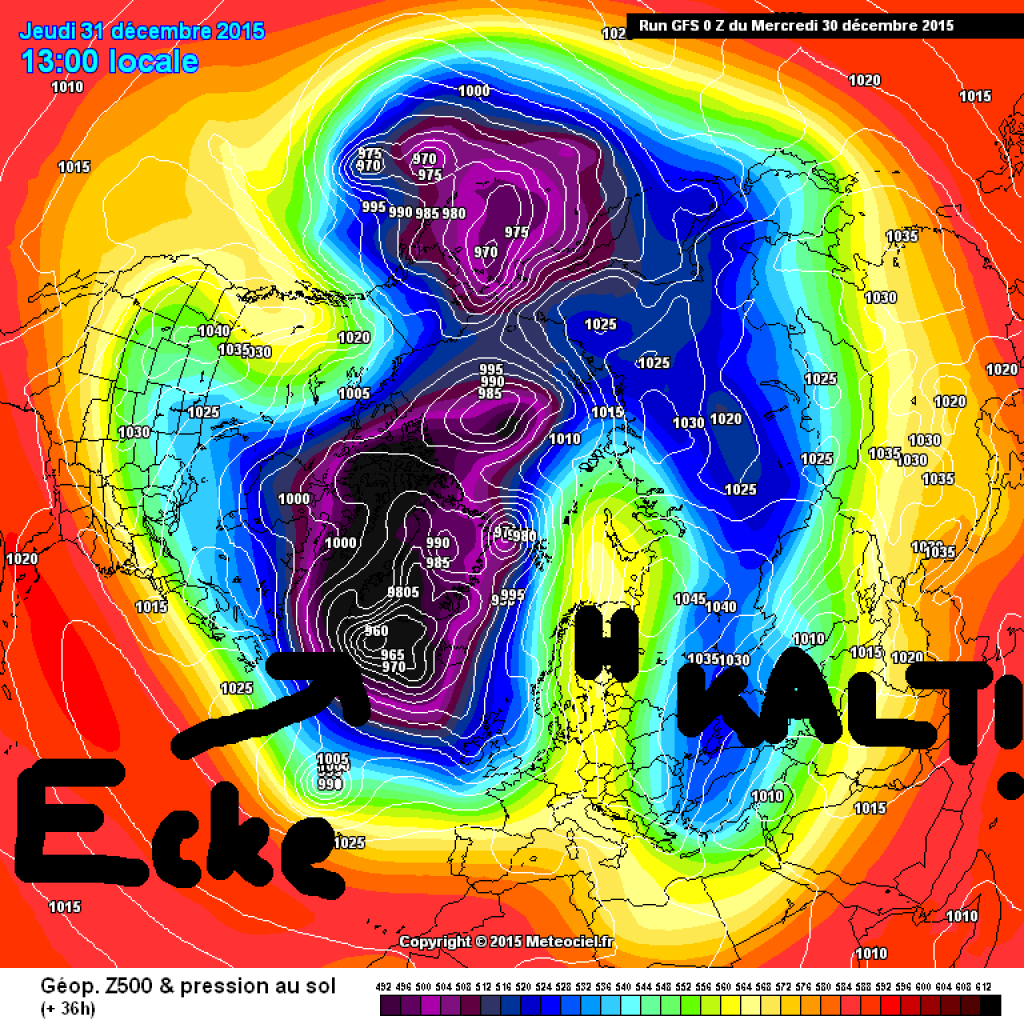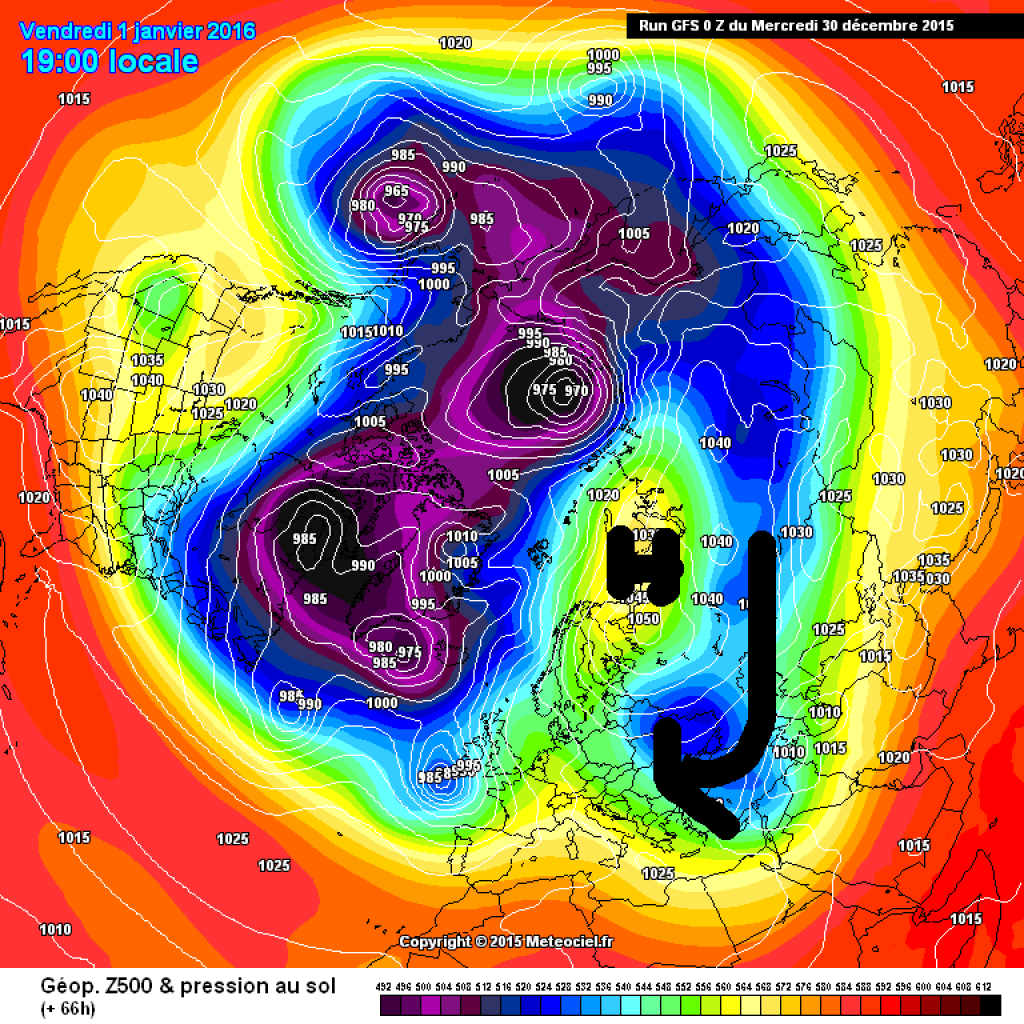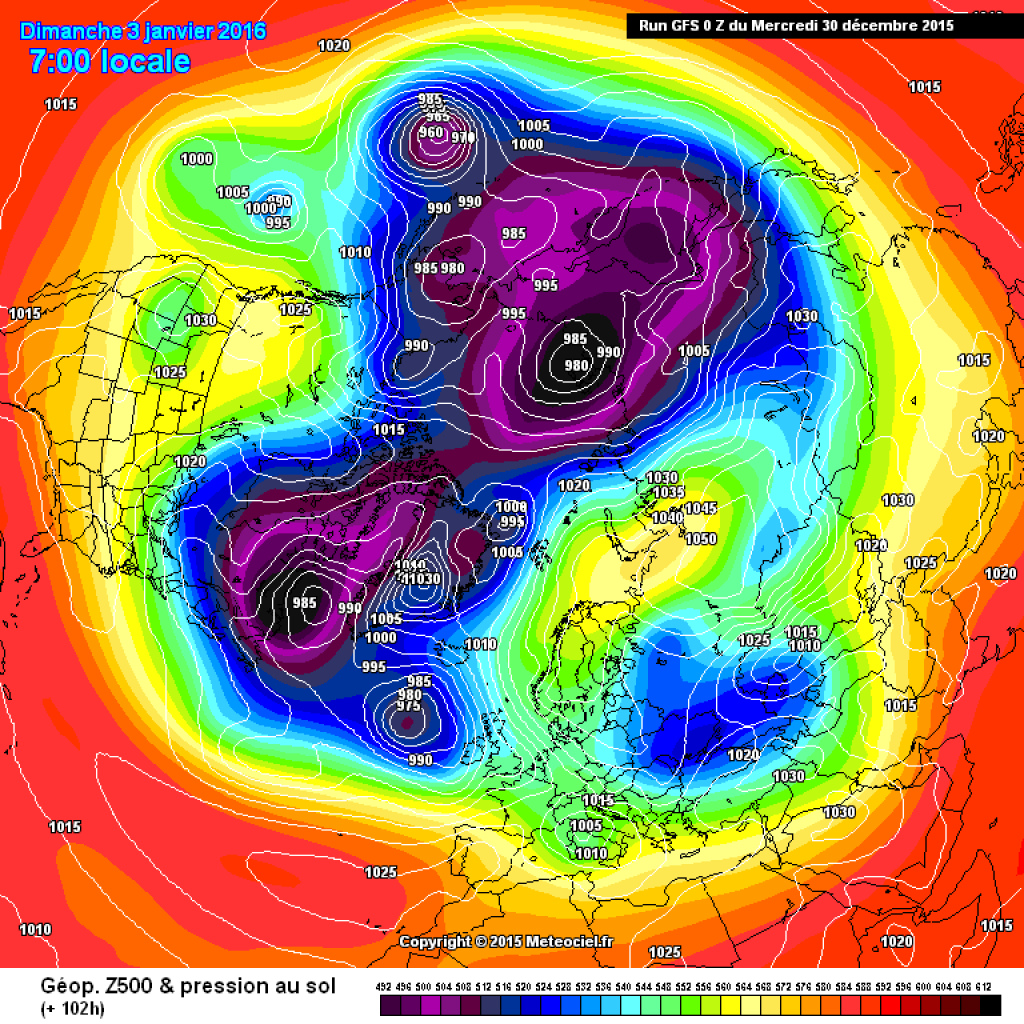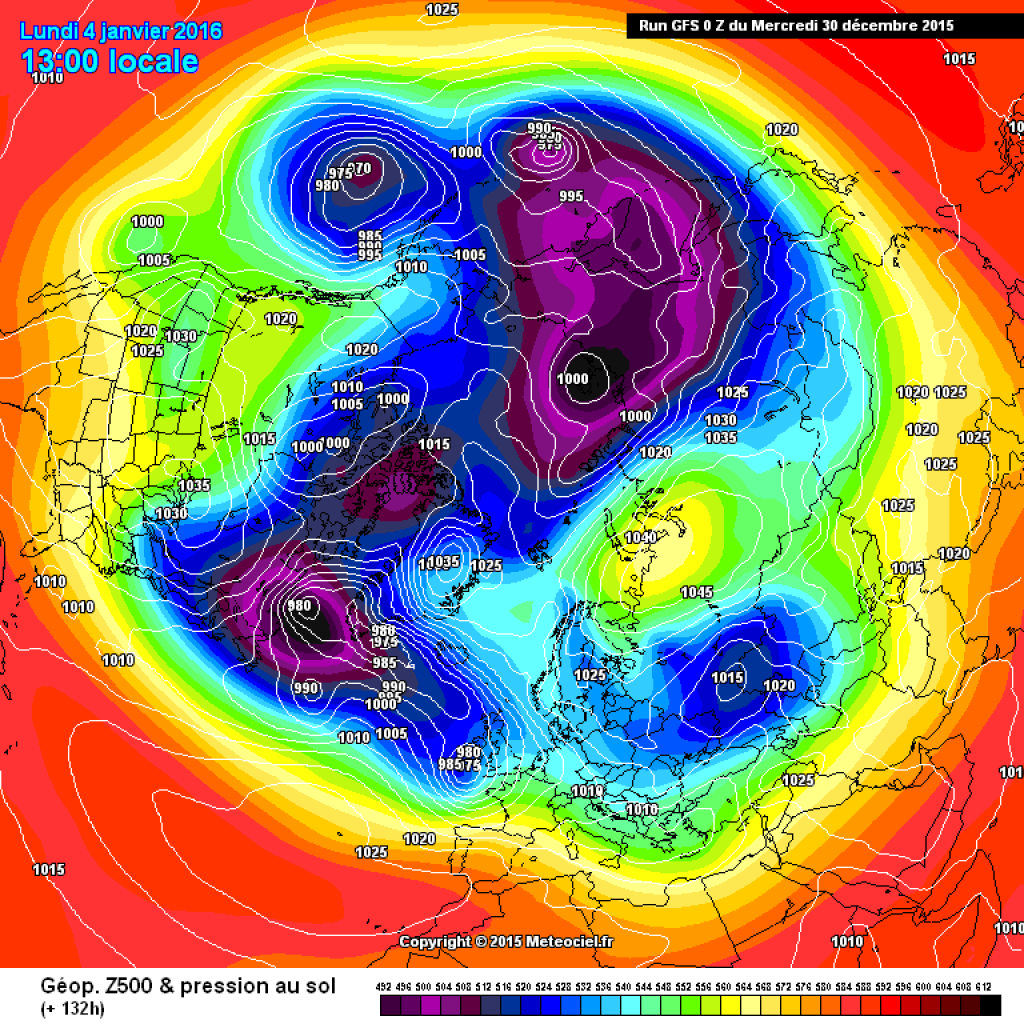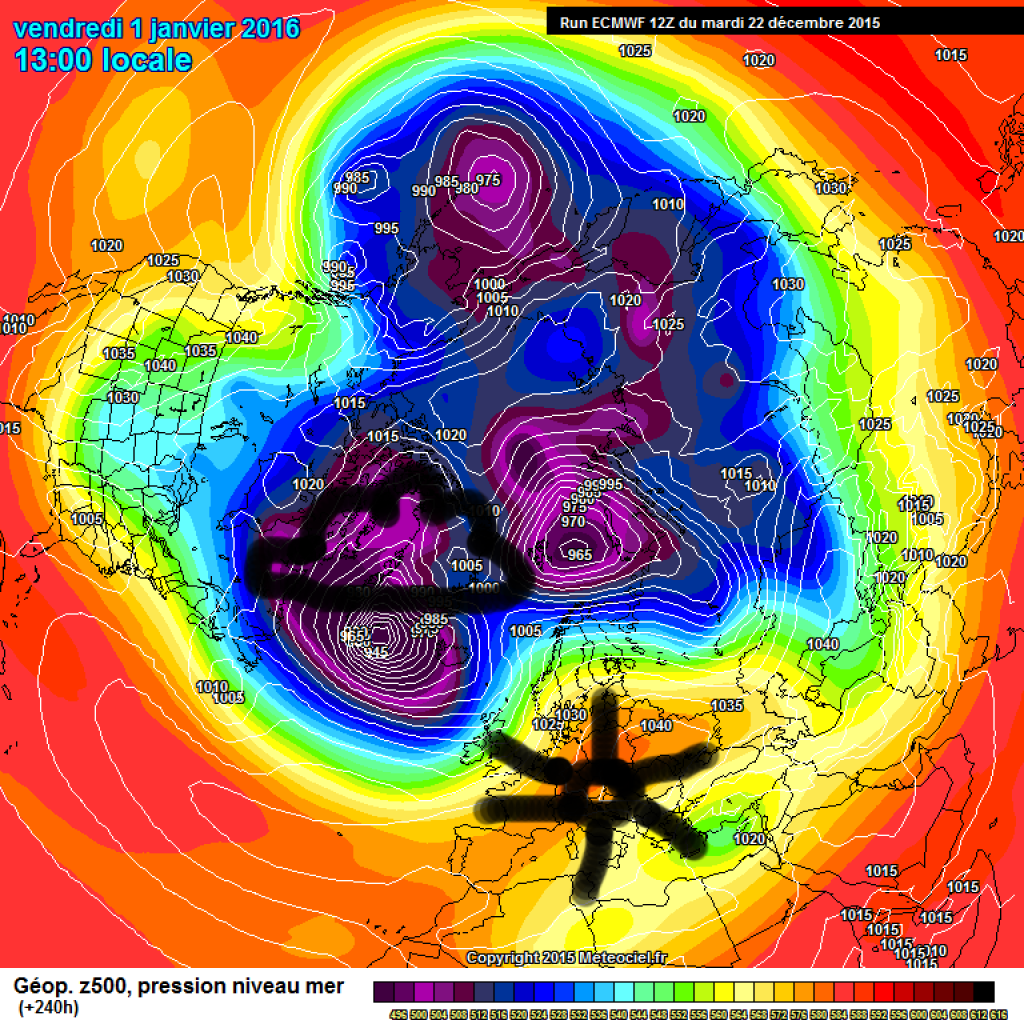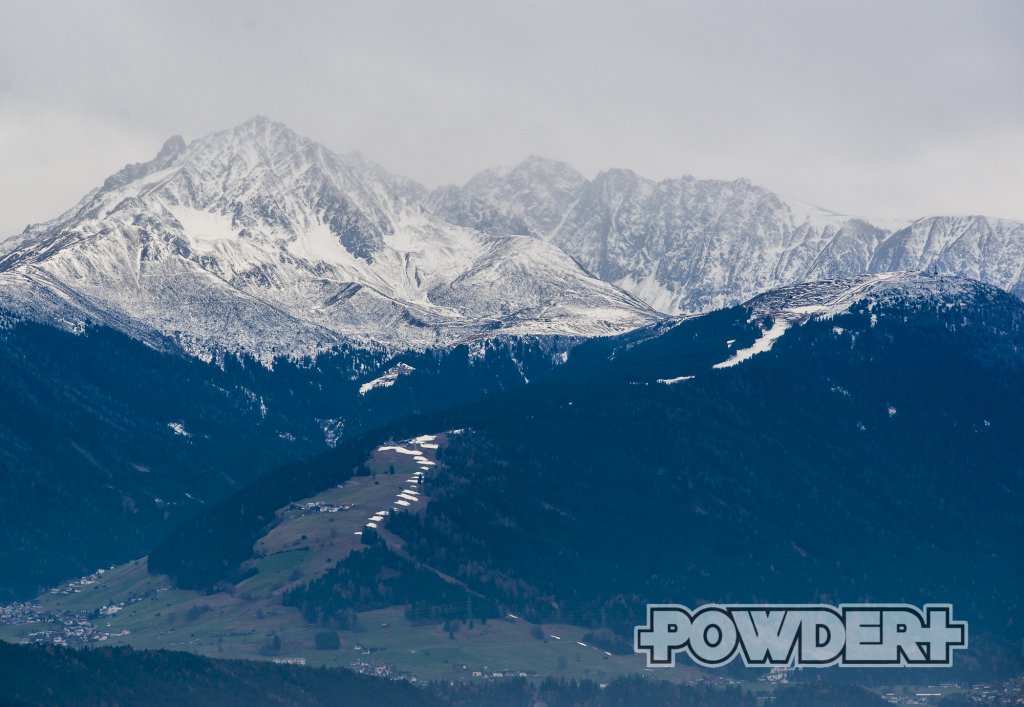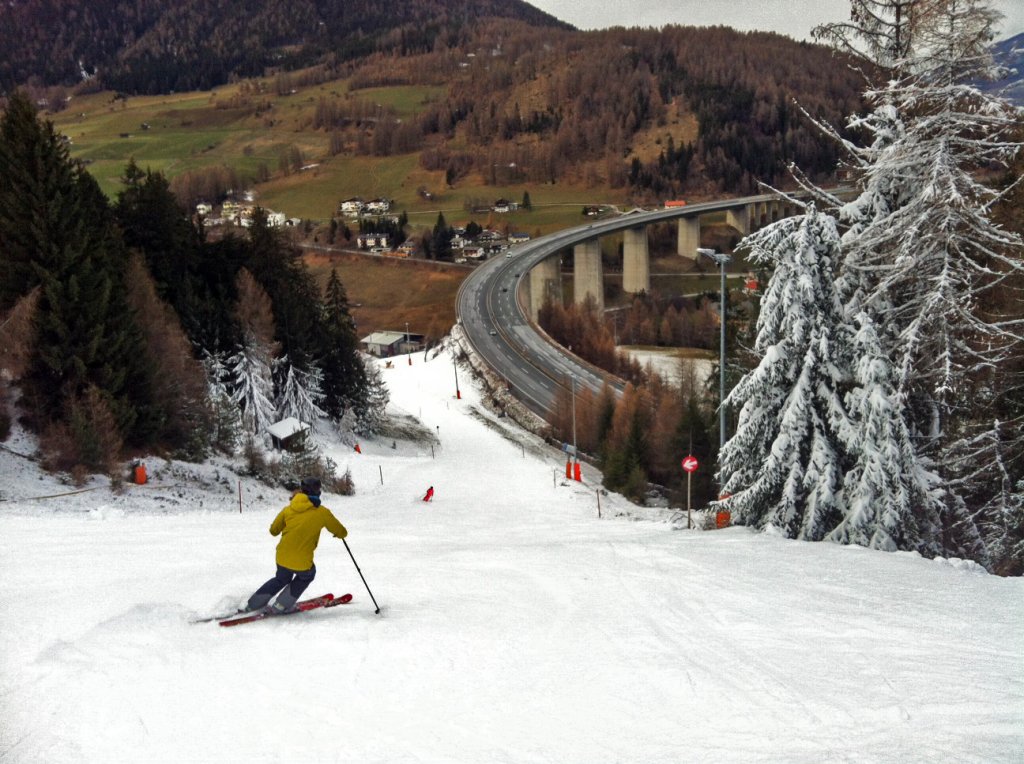What does this mean for us?
The models agree that the polar vortex will not survive such an advance of warm air into the far north without a bump or two. The previously quite round vortex will become a misshapen blob with two cold poles forming in the North Atlantic and North Pacific. In any case, this would be something very different from the eternal high that has accompanied us over the last few weeks. However, the effects on our weather are still uncertain. It looks as if the cold pole responsible for our area in the Greenland region will remain, it will just have a colleague opposite it. This would weaken the polar vortex, but the Atlantic weather would still basically work for us.
Before this really has an effect on us, the blocking Scandinavian high will allow cold air from the continental east to penetrate into Central Europe. Exactly where the cold air will make it to is uncertain, but the air mass boundary will probably end up somewhere roughly to the east of Austria. As we know, cold air alone is not enough for a proper winter: snow is still missing. This will come from the west in the form of disturbances and fronts spewed out from the Atlantic. The first such disturbance is likely to arrive on New Year's Day and will favor the northern slopes of the Alps (if not exclusively), but will not bring particularly heavy precipitation.


